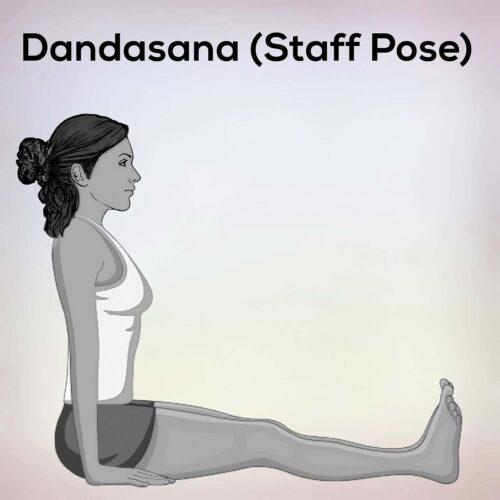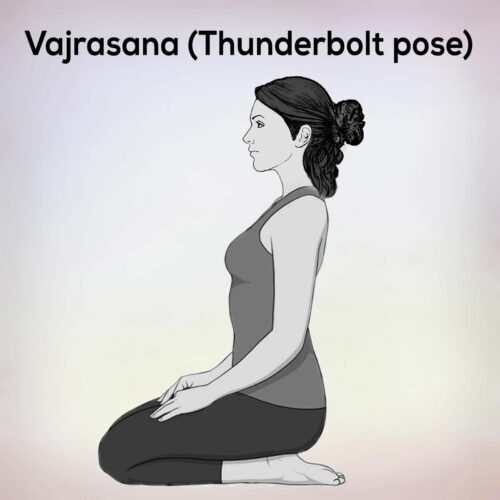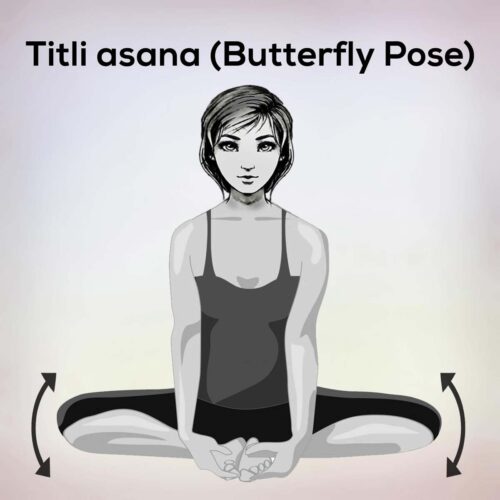Pasasana | Noose Pose | Rope Pose Steps, Benefits, And Precautions
Pasasana is a yoga posture that derives its name from the Sanskrit words “Pasa” meaning a tie, trap, noose, bond, or cord, and “Asana” meaning a seat, pose, or posture. The pose involves wrapping the arms around the squatting legs and clasping the hands behind the back, creating a noose-like shape.
Pasasana is a challenging pose that provides an excellent stretch to the upper body. To perform it, one needs to have a stable and strong foundation. The name “Pasasana” is derived from the resemblance of the arms in the pose to a noose.
If you have to do Pasasana, then for that in the initial postures you have to practice some asanas which are as follows.
- Virasana
- Balasana
- Gomukhasana
- Bharadvajasana
- Ardha Matsyendrasana
- Parivrtta Parsvakonasana
The Level of Asana is Intermediate, so this article explains the benefits of Pasasana (Noose Pose or Rope Pose) and the right way to practice it. The precautions to be taken while practicing this asana are also discussed.
Let us know the steps of practicing Pasasana (Noose Pose or Rope Pose) and its various benefits through this table of contents.
1)- Pasasana (Noose Pose or Rope Pose) Steps
2)- Tip for Beginners
3)- Benefits of the Pasasana (Noose Pose or Rope Pose)
4)- Precautions for Pasasana (Noose Pose or Rope Pose)
Pasasana (Noose Pose or Rope Pose) Steps
1)- Start by standing at the front of your mat with your feet hip-width apart. Steady and balance yourself.
2)- Next, bend your knees and lower your hips into a squatting position. Keep your feet flat on the mat and try to bring your heels as close together as possible.
3)- Once you are in a stable squat, shift your weight slightly to the left side. This will create space on the right side of your body for the twisting action.
4)- Take your right arm and reach it across your body towards the inside of your left thigh. Ideally, your right shoulder should be pressing against the outside of your left knee.
5)- Now, extend your left arm behind your back and reach it up towards the ceiling. Allow your left arm to wrap around your left leg, creating a “loop” with your arm.
6)- With your left hand, try to grab hold of your right wrist or forearm. If you can’t reach it, you can use a strap or towel to bridge the gap between your hands.
7)- Once you have a firm grip, gently twist your torso to the left, using your right arm as leverage to deepen the twist. Keep your spine long and your chest open.
8)- Hold the pose for a few breaths, maintaining a steady and even breath. Feel the stretch and the twist in your spine and upper body.
9)- To release the pose, slowly unwind the twist, bringing your torso back to center. Release your hands and come back to a standing position.
Tip for Beginners
- Warm up before Pasasana: Before attempting Pasasana, perform gentle stretches for the hips, spine, and shoulders to prepare your body for the pose.
- Use props if needed: If reaching your wrist or forearm is challenging, use a yoga strap or towel as a bridge between your hands to assist in deepening the twist.
- Focus on breath: During Pasasana, attend to your breath. Take deep breaths, gently deepening the twist as you exhale. This promotes calmness, centeredness, and comfort in the pose.
- Be patient and listen to your body: Pasasana is challenging, especially for beginners. Avoid over exertion and respect your limits. With consistent practice, you’ll improve over time.
- Seek guidance: If new to yoga or have concerns about Pasasana, consult a qualified yoga instructor. They provide personalized instructions and adjustments for safe and effective practice.
Benefits of the Pasasana (Noose Pose or Rope Pose)
- Spinal flexibility: Pasasana involves a deep spinal twist, which helps to improve flexibility and mobility in the spine. It stretches and tones the muscles along the entire length of the back.
- Hip opening: The pose requires a deep external rotation of the hip joint, which helps to open and release tension in the hips. It can be particularly beneficial for individuals who spend long hours sitting or have tight hip muscles.
- Shoulder and chest opening: As you twist and bind your arms in Pasasana, it helps to stretch and open the shoulders and chest. This can improve posture, relieve tension in the upper body, and promote better breathing.
- Digestive stimulation: The twisting motion of Pasasana can stimulate the digestive organs, helping to improve digestion and alleviate constipation. It also aids in detoxification by wringing out toxins from the abdominal organs.
- Balance and concentration: Maintaining balance in Pasasana requires focus and concentration. Regular practice of this pose can help improve balance, coordination, and mental focus.
- Strengthens legs and core: The pose engages the muscles of the legs, particularly the quadriceps and glutes, providing strength and stability. It also activates the core muscles, including the abdominals and obliques.
Precautions for Pasasana (Noose Pose or Rope Pose)
- Warm-up: As mentioned earlier, it’s crucial to properly warm up your body before attempting Pasasana. This helps prevent injuries and prepares your muscles and joints for the twisting motion of the pose.
- Avoid if injured: If you have any existing injuries or conditions in the knees, hips, spine, shoulders, or any other relevant areas, it’s advisable to avoid or modify Pasasana.
- Gradual progression: Respect your body’s limits and avoid forcing yourself into the full expression of Pasasana. Progress gradually, honoring your comfort level and avoiding overexertion.
- Proper alignment: Seek guidance from a qualified yoga instructor for Pasasana to ensure correct alignment and technique. Incorrect alignment can lead to unnecessary stress on the joints and muscles.
- Use of props: If reaching your wrist or forearm comfortably in Pasasana is challenging, props like a yoga strap or towel can assist you. They provide support and aid in gradual progress towards the full pose.
- Listen to your body: Pay attention to your body’s signals during the practice of Pasasana. If you experience pain, discomfort, or feel any sharp sensations, ease out of the pose and modify or skip it if necessary.
Remember, it’s always recommended to practice Pasasana under the guidance of a qualified yoga instructor who can provide proper guidance, adjustments, and ensure your safety throughout the practice.
Legal Disclaimer: Before participating in any exercise program or using any fitness products or services that may be described and/or made accessible in or through the Nexoye Website and/or the Services, you should consult with a physician or other healthcare provider.
















